NIL
LSU Football Returns To No. 1 In Transfer Portal After Adding No. 4 DL Bernard Gooden
LSU football coach Brian Kelly’s NCAA Transfer Portal class of 2024-25 has returned to No. 1 in the nation with a new addition. (Photo by Michael Bacigalupi). LSU is back. Football coach Brian Kelly’s 2024-25 NCAA Transfer Portal returned to No. 1 in the nation on Saturday, according to 247Sports.com’s rankings with the addition of […]

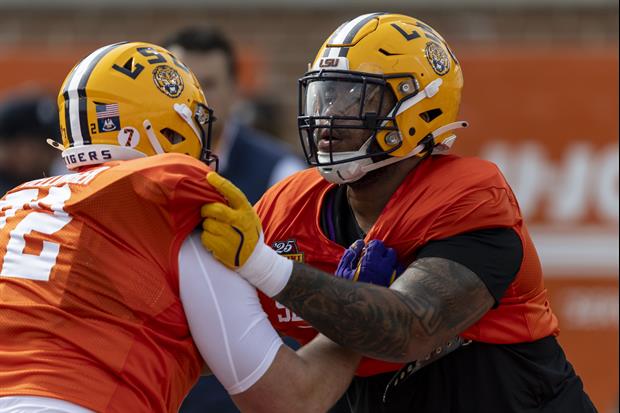
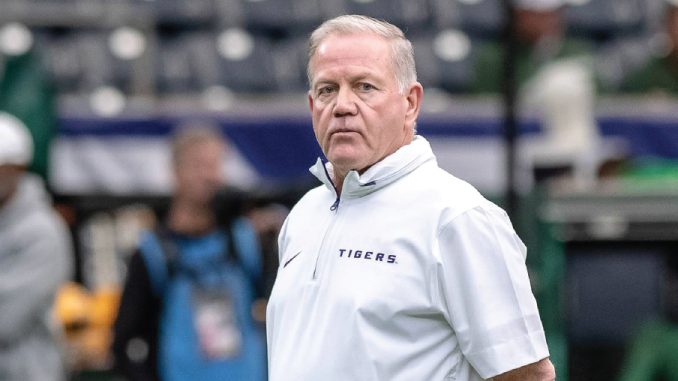
LSU is back.
Football coach Brian Kelly’s 2024-25 NCAA Transfer Portal returned to No. 1 in the nation on Saturday, according to 247Sports.com’s rankings with the addition of No. 4-ranked defensive lineman transfer Bernard Gooden of South Florida.
LSU’s portal class was No. 1 in January and stayed there for several weeks with 16 signees before dipping to No. 4. Gooden (6-foot-1, 280 pounds) is the 49th overall prospect in the portal and a four-star transfer who is the Tigers’ 17th portal signee. He made 35 tackles with 10 for lost yardage and 1.5 sacks through 11 starts and 13 games last season for South Florida (7-6, 4-4 American Athletic Conference) as a senior in the 2024 season. He will be a fifth-year senior for the Tigers.
Texas Tech is ranked No. 2 by 247sports.com with 19 portal signees. Ole Miss is No. 3 and with 11 more portal signees than LSU at 28. Oregon is fourth with 10 signees, and Florida State is fifth with 17.
On3.com’s top five has Texas Tech, Ole Miss, LSU, Oregon and Miami.
Gooden originally signed with Wake Forest out of Park Crossing High in Montgomery, Alabama, in 2021 as a three-star prospect – the No. 154 defensive lineman in the nation and No. 58 player in Alabama. After redshirting in 2021, he played in 12 games in 2022 as a backup with seven tackles and 1.5 stops for loss, sat out 2023 and transferred to South Florida.
LSU’s NUMBER ONE TRANSFER PORTAL CLASS (Rankings by 247sports.com)
-No. 7 Overall and No. 2 DE Patrick Payton, Florida State.
-No. 9 Overall and No. 3 WR Nic Anderson, Oklahoma.
-No. 16 Overall and No. 2 INTERIOR-OL Josh Thompson, Northwestern.
-No. 36 Overall and No. 10 WR-RET Barion Brown, Kentucky.
-No. 38 Overall and No. 4 INTERIOR-OL Braelin Moore, Virginia Tech.
-No. 49 Overall and No. 4 DL Bernard Gooden, South Florida.
-No. 88 Overall and No. 14 DE Jack Pyburn, Florida.
-No. 103 Overall and No. 14 CB Mansoor Delane, Virginia Tech.
-No. 112 Overall and No. 15 CB Ja’Keem Jackson, Florida.
-No. 141 Overall and No. 3 S Tamarcus Cooley, North Carolina State
-No. 146 Overall and No. 17 DE Jimari Butler, Nebraska.
-No. 186 Overall and No. 16 QB Michael Van Buren, Mississippi State.
-No. 211 Overall and No. 11 TE Bauer Sharp, Oklahoma.
-No. 498 Overall and No. 50 DT Sydir Mitchell, Texas.
-No. 665 Overall and No. 34 TE Donovan Green, Texas A&M
-No. 1,152 Overall and No. 201 WR Destyn Hill, Florida State.
-Unranked P Grant Chadwick, Middle Tennessee State.
FRESHMAN SIGNEE ENTERS TRANSFER PORTAL
Just before LSU signed Bernard Gooden, freshman signee defensive lineman Dilan Battle entered the portal. Battle signed with LSU as a three-star prospect and the No. 82 defensive lineman in the nation and No. 110 prospect in Texas from Mansfield Timberview High in Arlington. He graduated from high school in December, enrolled at LSU in January and went through spring practice.
NIL
Horns247’s July 4th Decision Day primer
It’s decision day for three in-state Texas targets: Aledo Top247 WR Kaydon Finley, Mansfield Lake Ridge five-star OT Felix Ojo, and North Crowley Top247 IOL John Turntine III. Here’s what you need to know heading into each announcement. Kaydon Finley, 4-star WR, Aledo Height/Weight: 6-foot, 2o0 pounds Rating: No. 110 overall prospect, No. 14 wide receiver, and […]

It’s decision day for three in-state Texas targets: Aledo Top247 WR Kaydon Finley, Mansfield Lake Ridge five-star OT Felix Ojo, and North Crowley Top247 IOL John Turntine III.
Here’s what you need to know heading into each announcement.
Kaydon Finley, 4-star WR, Aledo
Height/Weight: 6-foot, 2o0 pounds
Rating: No. 110 overall prospect, No. 14 wide receiver, and No. 15 overall prospect in the state of Texas per the 247Sports Composite rankings.
Scouting report:
“Massively productive receiver with a solid, sturdy build in the 6-foot, 200-pound range and gifted with big hands. Strong football pedigree as the son of a former standout pass-catching tight end at the high-major college and NFL level (Jermichael Finley). Know-how shows in route-running acumen, in-the-air ability, and run-after-catch toughness. Three-sport experience that includes basketball and track and field. Explosive testing numbers in broad jump and vertical categories. Physical pass catcher who transfers that play style to RAC situations. Still developing more juice at the top end, but initial juice consistently eats up cushion to get on top of DBs. Capable of playing outside or in the slot. Could potentially excel as a short-to-intermediate chain mover who can break chunk plays with that aforementioned RAC ability. Build and run strength suggest possible wildcat option if desired. Projects as a valuable asset in a high-major receiver room who could follow family footsteps to the pro level.”
Schools in contention: Arizona State, Notre Dame, Texas, Texas A&M
Crystal Ball: 100 percent Notre Dame
Announcement time: 6:30 p.m. CT
Announcement method: Social media — X: @KaydonFinley… Instagram: @kaydon.finley18
What Horns247 makes of his recruitment:
The Texas legacy was one of the first prospects in the 2026 cycle to pick up an offer from the Longhorns. The burnt orange were in great standing for most of the time since, but eventually Notre Dame weaseled into the recruitment and went from dark horse to legitimate contender after hosting Finley for several unofficial visits earlier this spring. The Fighting Irish made a savvy move by getting Finley to campus for an unofficial visit in early June about a week and half before his Notre Dame official visit, and the Fighting Irish have been trending since and have weathered the storm that was Finley’s June 20-22 official visit to Texas. Horns247 likes Notre Dame ahead of the evening decision.
NIL
Report: Opendorse, Teamworks reveal $16 million Day 1 rev-share distribution to players, staggering June numbers
The era of revenue sharing is here, opening on July 1st. Since then, Opendorse and Teamworks, both of which are systems that schools are using to distribute that rev-share to athletes, have told On3’s Pete Nakos and Yahoo Sports’ Ross Dellenger that there are some staggering numbers. Between Opendorse and Teamworks, Dellenger reports that more […]
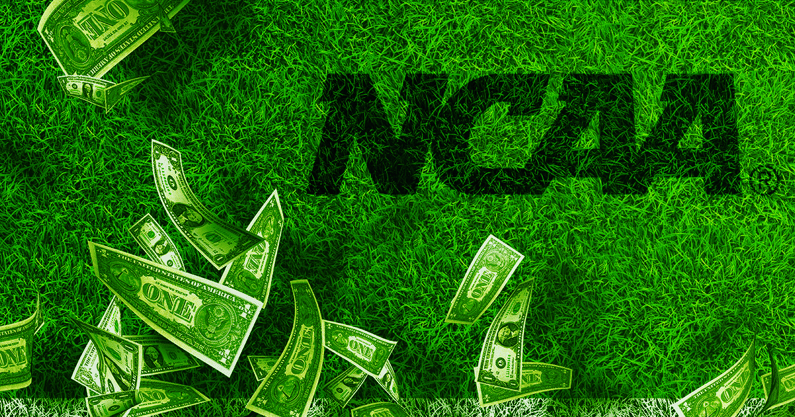
The era of revenue sharing is here, opening on July 1st. Since then, Opendorse and Teamworks, both of which are systems that schools are using to distribute that rev-share to athletes, have told On3’s Pete Nakos and Yahoo Sports’ Ross Dellenger that there are some staggering numbers.
Between Opendorse and Teamworks, Dellenger reports that more than $16 million was distributed from schools to student-athletes, and Nakos reported Opendorse distributed $10 million on July 1. That, notably, doesn’t include any information on distribution from the Big 12 and Big Ten, who reached an agreement to distribute through PayPal, and PayPal hasn’t shared any of that information to this point.
However, it goes beyond those rev-share numbers, making $16 million seem like a relatively small figure. Teamworks also tells Dellenger that there were massive June numbers being paid to student-athletes through collectives. That’s over $71 million to athletes in June. The reason that number got so high is likely due to schools and collectives front-loading payments before the House settlement took effect on July 1st.
The House settlement allows for rev-share. It has also changed enforcement over NIL deals. NIL deals above $600 will need third-party approval and will be sent to a new clearinghouse called NIL Go. That oversight is hoping to set a new market. There is, on top of that, a new enforcement agency in place called the College Sports Commission.
In essence, schools and collectives wanted to get those deals done in June, so there would be less oversight on them. There can still be NIL deals, which are different and unique from rev-share, but they’re going to need approval. There’s also going to be questions about how the College Sports Commission handles these types of investigations.
The House settlement allows for rev-share where each school can distribute as much as $20.5 million to their student-athletes. Schools can distribute that as they wish, but football is expected to receive the most at schools with FBS programs.
The Big Ten, PayPal make payments on behalf of schools
While Ross Dellenger reported that PayPal had not made its figures public, there is some interesting insight that can be gleaned from their process with the Big Ten. In it, Dellenger adds that it is the conference itself making payments on behalf of schools.
Essentially, it works by the schools submitting the athletes who are supposed to receive payments, and for what amount. It is supposed to avoid complications from the school managing those payments. On Tuesday, July 1st, the Big Ten began this process by sharing revenue with athletes from three schools. By the end of the month, all schools will have money distributed.
As was the case with schools using Opendorse and Teamworks, many Big Ten schools front-loaded payments in June. That helped to create those smaller initial distributions on Tuesday.
NIL
Oklahoma has owned college football for decades—but one era stands alone
Oklahoma has been playing varsity college football for 131 years this coming season, but it was the Bud Wilkinson era beginning in the late 1940s that truly started the Sooners’ ascendancy to the blue blood level of the sport. Bob Stoops (190 wins) and Barry Switzer (157) both had more wins than Wilkinson’s Oklahoma teams, […]

Oklahoma has been playing varsity college football for 131 years this coming season, but it was the Bud Wilkinson era beginning in the late 1940s that truly started the Sooners’ ascendancy to the blue blood level of the sport.
Bob Stoops (190 wins) and Barry Switzer (157) both had more wins than Wilkinson’s Oklahoma teams, but it was Wilkinson’s teams of the 1950s that combined for 93 wins in 103 games and a decade-best winning percentage of .895 that produced the best decade in OU football history.
Which decade of OU football was the greatest?
During that record-setting decade of Oklahoma football, the Sooners won three national championships (1950, 1955 and 1956), 10 consecutive conference championships and produced a Heisman Trophy winner in Billy Vessels (1952), who played halfback, wide receiver and returned kicks for OU. Also during that decade, Oklahoma ran off a record-setting 47 consecutive wins between 1953 and 1957, a mark that still stands today and many believe may never be broken.
The 1950s proved to be the first of several more decades of Oklahoma football supremacy under legendary coaches Switzer and Stoops. In the six decades that followed the 1950s, the Sooners ended the 10 years among the top four teams in total wins in four of the six, and was No. 2 in that category twice (1970-79 and 2000-09).
Not every decade of Sooner football since the 1950s, however, has lived up to typical Oklahoma standards. The two least satisfactory decades in the last 75 years were in the 1960s and1990s.
Gary Gibbs, Howard Schnellenberger and John Blake were at the helm for Oklahoma in the 1990s before Bob Stoops took over in 1999. From 1990-99, Schnellenberger and Blake were a combined 17-27 over four seasons and Oklahoma was 61-51 (.543), 49th among teams at the NCAA Division I level.
OU also went through a period of coaching transition in the 1960s. It was the tail end of the Wilkinson era (1963 was his final season), and the Sooners would have three other head coaches (Gomer Jones, Jim Mackenzie and Chuck Fairbanks) before the decade ended. Oklahoma was tied for 23rd in the country in the decade of the ’60s with 62 wins and 40 losses and a winning percentage of .606.
Oklahoma’s 706 wins since 1946, or the end of World War II, are the most of any team in college football. Over that period, the Sooners have won all seven of their national championships and 44 of their nation-best 50 conference championships.
In the seven decades beginning with the 1950s, Oklahoma has won more than 90 games in a decade, an average of at least nine wins per season, five times with a winning percentage of .820 or better in four of the seven decades.
For those who might be interested, Oklahoma is 42-21 through the first five seasons of the 2020s. Two of those (2022 and 2024), however, were losing seasons in three seasons under head coach Brent Venables. To put that into context, Oklahoma has only had seven losing seasons total since 1950.
Read more about OU football
NIL
Where Does Wildcat NIL Fall In The New Era of College Athletics?
While this is a significant shift in college sports, the impact on Wildcat NIL may be more of a pivot than a complete overhaul. Kansas State Director of Athletics Gene Taylor discussed the collective’s evolving role on this week’s Ask the A.D. “Their [Wildcat NIL] role will now be going out and getting that third-party […]
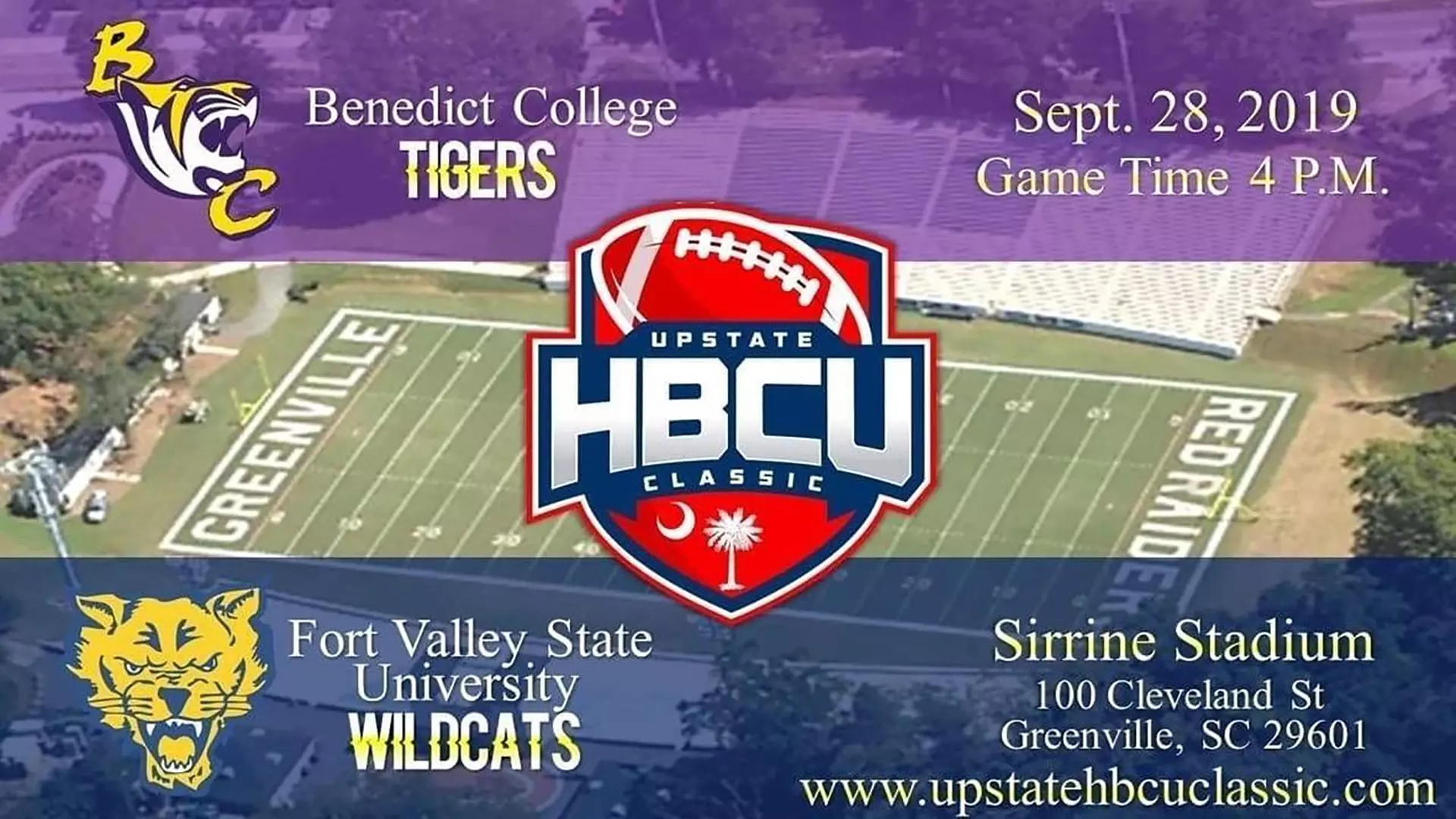


While this is a significant shift in college sports, the impact on Wildcat NIL may be more of a pivot than a complete overhaul. Kansas State Director of Athletics Gene Taylor discussed the collective’s evolving role on this week’s Ask the A.D.
“Their [Wildcat NIL] role will now be going out and getting that third-party NIL, the true NIL that was supposed to be back in the day,” Taylor said. “When coaches come to us and say, ‘Where does so-and-so go out and try to get an opportunity for a corporate relationship?’ We can go to either one of those groups [Wildcat NIL or Learfield] and Wildcat NIL will be very involved with that in the future.”
The change completely shifts Wildcat NIL away from fundraising, which was one of its primary functions before Tuesday.
“Donors won’t give money directly to Wildcat NIL,” Taylor said. “The corporate side of that will be the roll they’ll play.”
The ruling on the House settlement established the College Sports Commission, a group responsible for overseeing payments exceeding $600, including those from collectives.
“The College Sports Commission, and the new CEO (Bryan Seeley), who is coming from Major League Baseball, that has that background, and he’s done this for Major League Baseball, making sure teams stay within the cap,” Taylor said. “He has come out and said in meetings with our commissioners, ‘We will go after the bad actors, and once we do, we will act swiftly and we will punish those bad actors…’ If that works, then this will be a level playing field.”
NIL collectives knew change was coming, and their behavior reflects that. The Commission went into effect on July 1; on June 30, collectives reportedly paid out $20 million to college athletes (Front Office Sports). Front Office Sports also reported that compared to last June, the payments collectives made were 824 percent higher.
The clock struck midnight on the old era of NIL. Wildcat NIL will look to keep third-party deals coming to K-State athletes as their focus shifts away from donor funding.
Indianapolis Colts’ Running Back DJ Giddens Receives Ultimate Honor From Hometown
Four-Star 2026 Class Forward Teases K-State Future After Official Visit
K-State QB Avery Johnson Skyrockets NFL Hopes In Latest Big 12 Rankings
NIL
Revenue Share Breakdown Could Create Advantage For Mid-Major
iStockphoto / © Grace Hollars/IndyStar / USA TODAY NETWORK via Imagn Images Audio By Carbonatix Division-I colleges and universities were allowed to share revenue with their student-athletes for the first time on Tuesday, which actually creates a competitive advantage for mid-major basketball programs. Smaller schools with FCS football programs are able to distribute more money […]

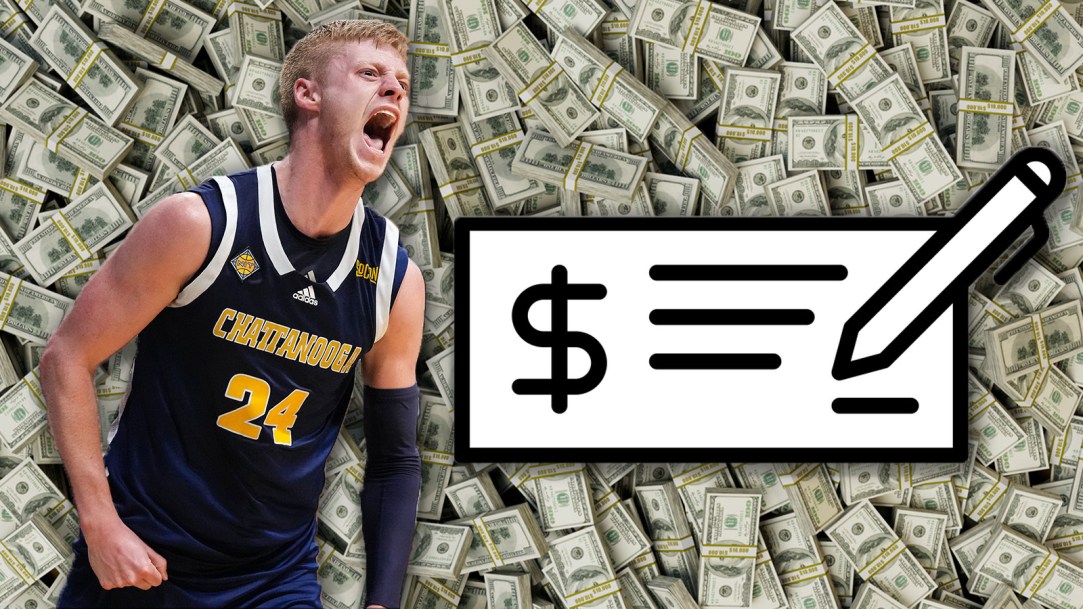

Audio By Carbonatix
Division-I colleges and universities were allowed to share revenue with their student-athletes for the first time on Tuesday, which actually creates a competitive advantage for mid-major basketball programs. Smaller schools with FCS football programs are able to distribute more money elsewhere.
It will be interesting to see whether this new era of collegiate athletics allows for more parity on the hardwood.
The last four years of Name, Image and Likeness were largely unregulated. There were no rules. Schools, through their NIL collectives, were able to spend whatever amount of money they wanted on any player in any sport without any guidelines on how to operate. Inducements were common. Tampering was rampant.
Although some of that behavior will surely continue under the table, this new revenue sharing model is supposed to provide some semblance of structure when it comes to finances across college sports. Universities must operate under a set cap for direct compensation. Outside NIL deals must undergo approval from an outside entity. The entire pay scale will be limited. (We’ll see!)
Generally speaking, SEC programs will have a maximum annual budget of approximately $21 million. Approximately $14 million will go to football, $4 million to men’s basketball, $1 million to women’s basketball and $2 million to the other sports combined. Those numbers will obviously vary.
This is where smaller schools might find some common ground if they do not compete in college football on the FBS level. They can pump more money toward college basketball.
Smaller schools could choose to split its revenue share money as follows:
- TOTAL — $4.8 million
- Men’s basketball: $2.66 million
- Football: $1.31 million
- Women’s basketball: $485,000
- Other sports: $350,000
The $2.66 million for men’s basketball is not too far off from $4 million at SEC schools. That $2.66 million number is more or less on par with high-major programs.
However, those numbers are not the same at every school. Some mid-majors have larger goals for compensation. Others have less.
Athletic departments could spend a similar amount of money on basketball as the “bigger” schools that focus on football to be just as competitive in terms of compensation as, say, Wisconsin. It will be interesting to see how this plays out. How long will those “bigger” schools allow for this somewhat level playing field? When will they starts pumping more money in the direction of men’s basketball?
NIL
Where Does Wildcat NIL Fall In The New Era of College Athletics?
In April of 2022, former Kansas State football players Jesse Ertz, Ryan Henington, Ross Elder and Brad Fulner came together to help create Kansas State’s NIL collective. The collective helped Kansas State navigate the changing world of name, image and likeness. Things changed on Tuesday as a new era of NIL was ushered in, and […]

In April of 2022, former Kansas State football players Jesse Ertz, Ryan Henington, Ross Elder and Brad Fulner came together to help create Kansas State’s NIL collective. The collective helped Kansas State navigate the changing world of name, image and likeness. Things changed on Tuesday as a new era of NIL was ushered in, and college athletic programs are now able to pay their athletes directly.
While this is a significant shift in college sports, the impact on Wildcat NIL may be more of a pivot than a complete overhaul. Kansas State Director of Athletics Gene Taylor discussed the collective’s evolving role on this week’s Ask the A.D.
“Their [Wildcat NIL] role will now be going out and getting that third-party NIL, the true NIL that was supposed to be back in the day,” Taylor said. “When coaches come to us and say, ‘Where does so-and-so go out and try to get an opportunity for a corporate relationship?’ We can go to either one of those groups [Wildcat NIL or Learfield] and Wildcat NIL will be very involved with that in the future.”
The change completely shifts Wildcat NIL away from fundraising, which was one of its primary functions before Tuesday.
“Donors won’t give money directly to Wildcat NIL,” Taylor said. “The corporate side of that will be the roll they’ll play.”
The ruling on the House settlement established the College Sports Commission, a group responsible for overseeing payments exceeding $600, including those from collectives.
“The College Sports Commission, and the new CEO (Bryan Seeley), who is coming from Major League Baseball, that has that background, and he’s done this for Major League Baseball, making sure teams stay within the cap,” Taylor said. “He has come out and said in meetings with our commissioners, ‘We will go after the bad actors, and once we do, we will act swiftly and we will punish those bad actors…’ If that works, then this will be a level playing field.”
NIL collectives knew change was coming, and their behavior reflects that. The Commission went into effect on July 1; on June 30, collectives reportedly paid out $20 million to college athletes (Front Office Sports). Front Office Sports also reported that compared to last June, the payments collectives made were 824 percent higher.
The clock struck midnight on the old era of NIL. Wildcat NIL will look to keep third-party deals coming to K-State athletes as their focus shifts away from donor funding.
Indianapolis Colts’ Running Back DJ Giddens Receives Ultimate Honor From Hometown
Four-Star 2026 Class Forward Teases K-State Future After Official Visit
K-State QB Avery Johnson Skyrockets NFL Hopes In Latest Big 12 Rankings
-
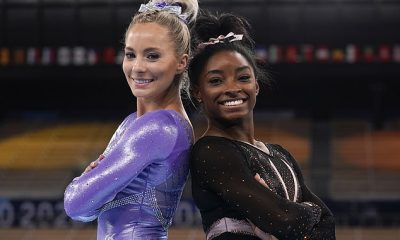
 Health3 weeks ago
Health3 weeks agoGymnast MyKayla Skinner Claims Simone Biles 'Belittled and Ostracized' Her amid Riley …
-

 Motorsports3 weeks ago
Motorsports3 weeks agoNASCAR Race Today: Mexico City start times, schedule and how to watch live on TV
-

 Motorsports3 weeks ago
Motorsports3 weeks agoNASCAR in Mexico City: Where to watch, start time, stream, lineup, race preview for inaugural Viva Mexico 250
-

 College Sports1 week ago
College Sports1 week agoWAC to Rebrand to UAC, Add Five New Members in 2026
-

 High School Sports3 weeks ago
High School Sports3 weeks agoNew Bedford top stories
-

 College Sports3 weeks ago
College Sports3 weeks agoLivvy Dunne honors boyfriend Paul Skenes with twist on LSU jersey
-

 Health3 weeks ago
Health3 weeks agoChicago Sky receive unfortunate reaction to 'mental health' statement with Angel Reese
-
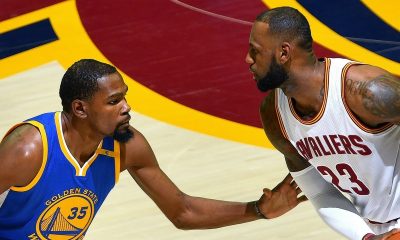
 Health3 weeks ago
Health3 weeks agoKyrie Irving's Strong Message Amid Men's Mental Health Awareness Month
-
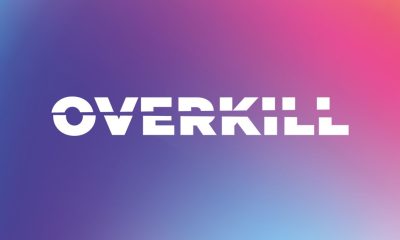
 Technology2 weeks ago
Technology2 weeks agoPolar is teasing a Whoop alternative without subscription
-
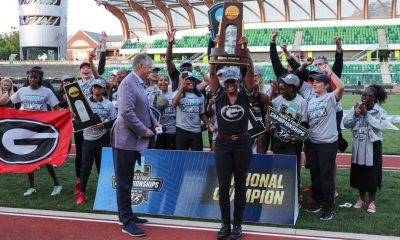
 Sports3 weeks ago
Sports3 weeks agoGeorgia women soar to first outdoor track championship




































